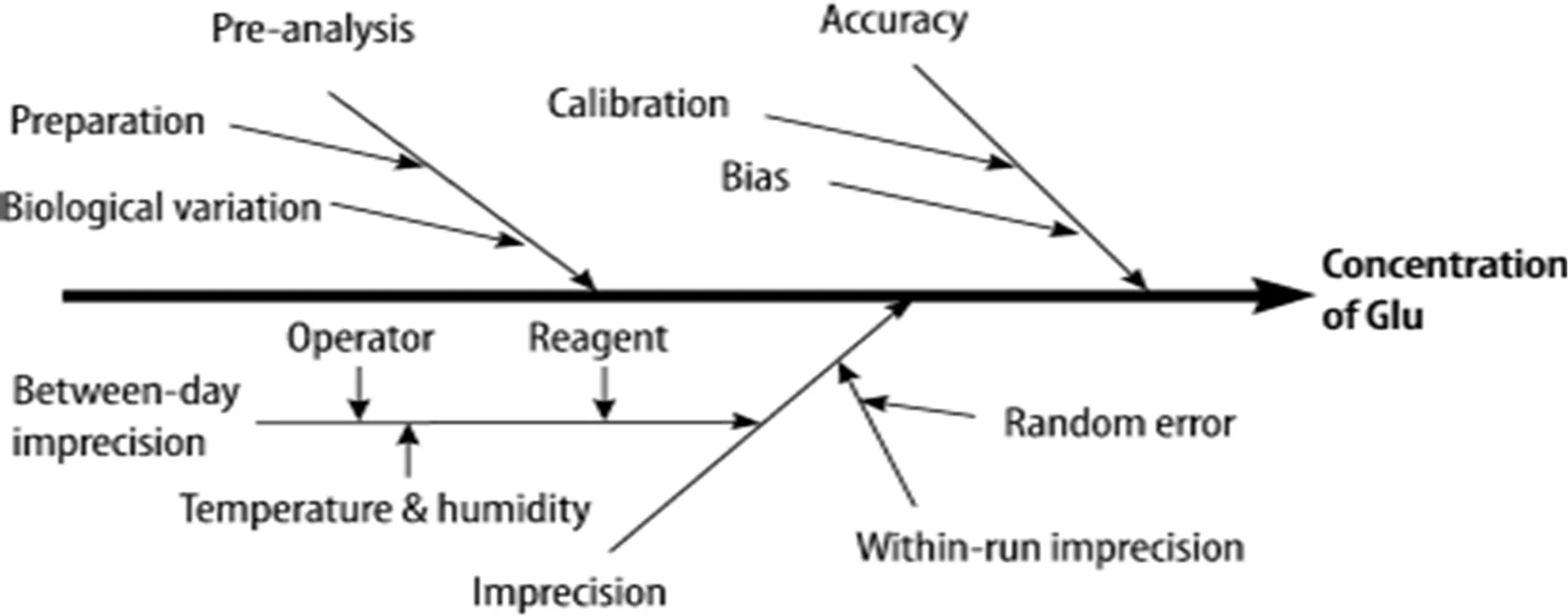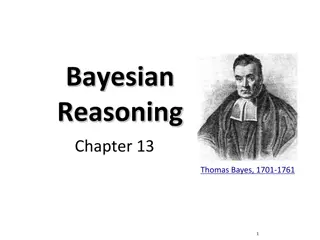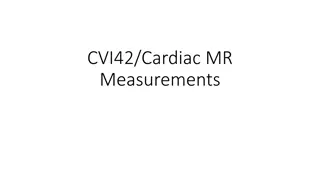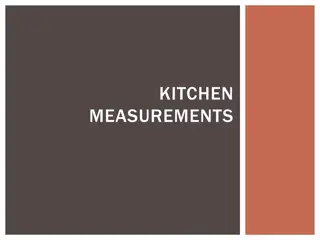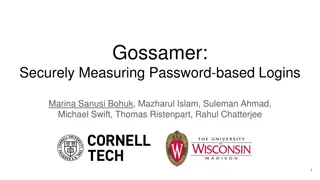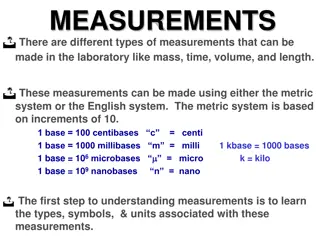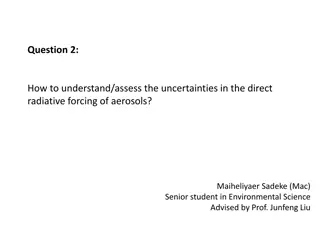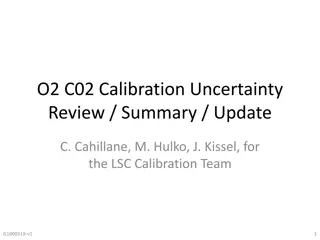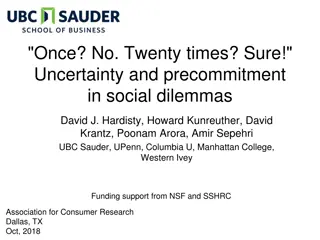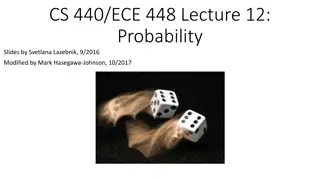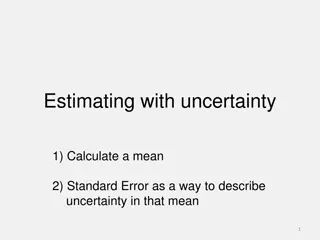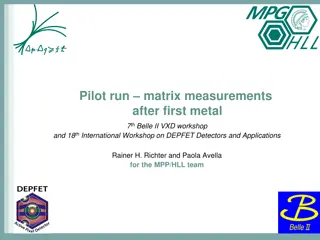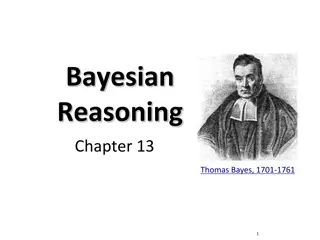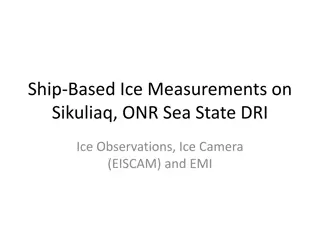Uncertainty in Health Measurements
Concept of uncertainty in health measurements is crucial for ensuring accuracy in diagnostic processes. This involves factors such as within-run precision, between-run precision, calibrator coverage, mean calculations, standard deviation, and expanded uncertainty. Proper calibration, repeated testing, and calculation of standard uncertainty are key steps in managing uncertainty. Incorporating known calibration uncertainty and using coverage factors can help determine confidence intervals for results, ensuring reliability in health measurements.
Download Presentation

Please find below an Image/Link to download the presentation.
The content on the website is provided AS IS for your information and personal use only. It may not be sold, licensed, or shared on other websites without obtaining consent from the author.If you encounter any issues during the download, it is possible that the publisher has removed the file from their server.
You are allowed to download the files provided on this website for personal or commercial use, subject to the condition that they are used lawfully. All files are the property of their respective owners.
The content on the website is provided AS IS for your information and personal use only. It may not be sold, licensed, or shared on other websites without obtaining consent from the author.
E N D
Presentation Transcript
Alison Bransfield Bon Secours Health System
Within-run precision Between-run precision Calibrator Coverage factor
Mean of an infinite number of measurements No way to know the true value EQA Spiked samples Reference method
Ensure that the instrument has been properly calibrated Perform the test a minimum of 20 times Calculate the mean and SD Calculate the standard uncertainty (u) of the SD: u = SD/ n
Perform the test over a minimum of 15 runs or days CLSI EP-12-A recommends two levels, three times a day for five days As for within-run, calculate mean, SD and u
Within-run: Mean = 3.56 mmol/L n = 30 SD = 0.08 mmol/L u = 0.0146 mmol/L Between-run: Mean = 3.56 mmol/L n = 30 SD = 0.12 mmol/L u = 0.0219 mmol/L
Where the uncertainty of the calibration is known this can be incorporated Abbott provide a guide for the Architect analyser Clinical Chemistry, Immunoassay Traceability, Uncertainty of Measurement. Abbott Architect 3rd edition Oct 2017
uc = ((uwr)2= (ubr)2+ (ucal)2) uc = ((0.0146)2+ (0.0219)2 + (0.033)2) = 0.0422 mmol/L
Use a coverage factor of 2 to calculate the 95% confidence interval Thus the expanded uncertainty of a potassium measurement at 3.56 mmol/L is 0.0422 mmol/L The true result lies between 3.5178 and 3.6022 mmol/L
Not practical in a typical biochemistry laboratory report Available for users if requested never has been or has it? Requesters will query the validity of a result or the change in a result
Lab has a responsibility to be aware of the uncertainty at decision or critical levels
Think of other contributors to uncertainty such as dilutions
Tests which are calculated from other test values combine the uncertainties of all the components
24 hour urine collections Uncertainty of result Uncertainty of measurement of volume Uncertainty of collection
The end user is unaware of the uncertainty associated with a result The laboratory has a duty to consider uncertainty Performance of a method around clinical decision levels must be well defined
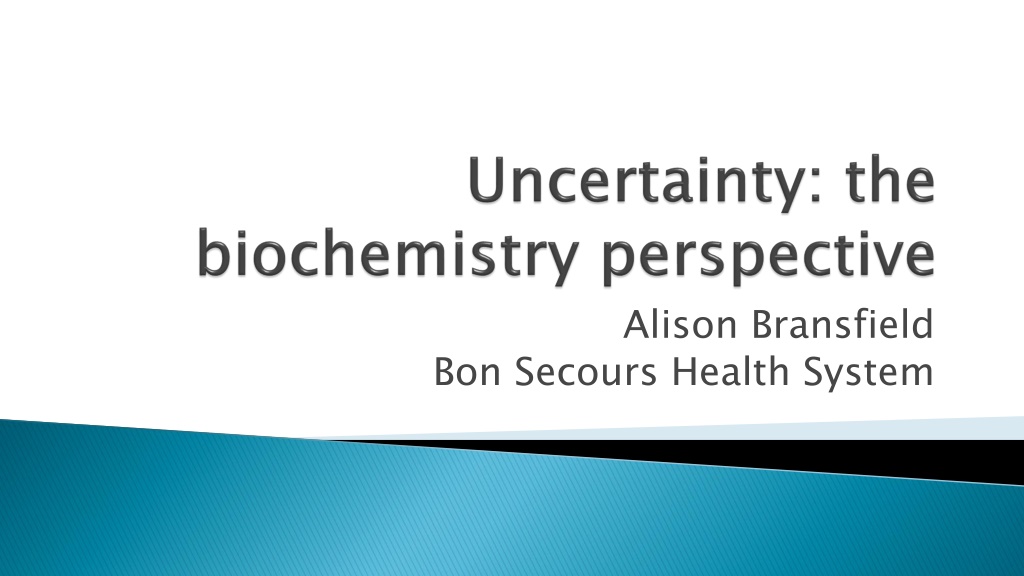
 undefined
undefined






